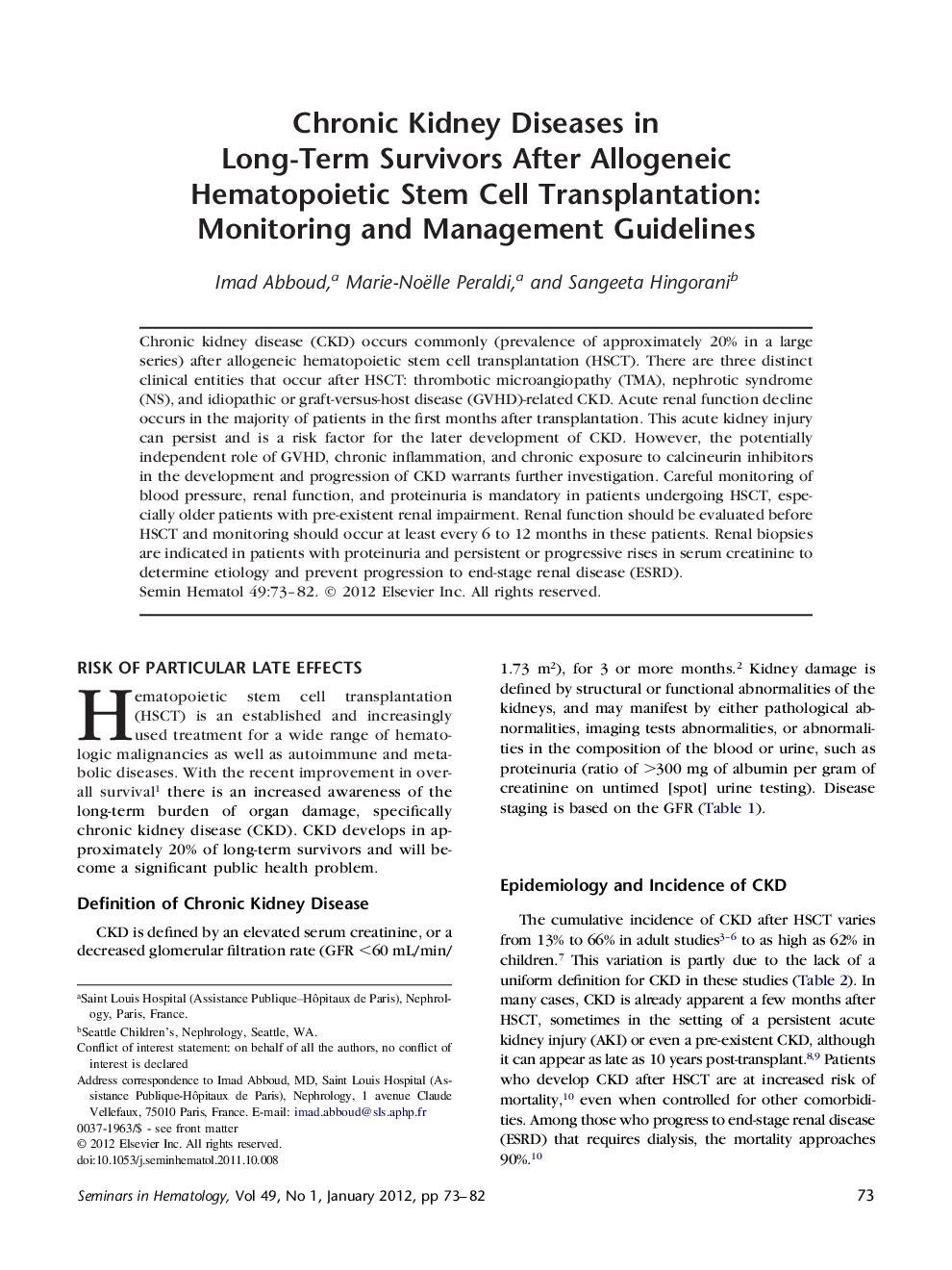| Article ID | Journal | Published Year | Pages | File Type |
|---|---|---|---|---|
| 3333659 | Seminars in Hematology | 2012 | 10 Pages |
Abstract
Chronic kidney disease (CKD) occurs commonly (prevalence of approximately 20% in a large series) after allogeneic hematopoietic stem cell transplantation (HSCT). There are three distinct clinical entities that occur after HSCT: thrombotic microangiopathy (TMA), nephrotic syndrome (NS), and idiopathic or graft-versus-host disease (GVHD)-related CKD. Acute renal function decline occurs in the majority of patients in the first months after transplantation. This acute kidney injury can persist and is a risk factor for the later development of CKD. However, the potentially independent role of GVHD, chronic inflammation, and chronic exposure to calcineurin inhibitors in the development and progression of CKD warrants further investigation. Careful monitoring of blood pressure, renal function, and proteinuria is mandatory in patients undergoing HSCT, especially older patients with pre-existent renal impairment. Renal function should be evaluated before HSCT and monitoring should occur at least every 6 to 12 months in these patients. Renal biopsies are indicated in patients with proteinuria and persistent or progressive rises in serum creatinine to determine etiology and prevent progression to end-stage renal disease (ESRD).
Related Topics
Health Sciences
Medicine and Dentistry
Hematology
Authors
Imad Abboud, Marie-Noëlle Peraldi, Sangeeta Hingorani,
